 W
WAbu Sa'id Bahadur Khan, also spelt Abusaid Bahador Khan, Abu Sa'id Behauder, was the ninth ruler of the Ilkhanate, a division of the Mongol Empire that encompassed the present day countries of Iran, Azerbaijan, Georgia, and Armenia, as well as portions of Iraq, Turkey, Afghanistan, and Pakistan.
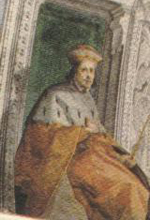 W
WThe Most Serene Prince Antoniotto Adorno was the 6th doge of the Republic of Genoa and rose four times to this supposedly lifelong position, making him the person most often elected to the Doge office in the history of the republic.
 W
WAlfonso XI, called the Avenger, was the king of Castile, León and Galicia. He was the son of Ferdinand IV of Castile and his wife Constance of Portugal. Upon his father's death in 1312, several disputes ensued over who would hold regency, which were resolved in 1313.
 W
WGiovanni d'Andrea or Johannes Andreæ was an Italian expert in canon law, the most renowned and successful canonist of the later Middle Ages. His contemporaries referred to him as iuris canonici fons et tuba. Most important among his works were extensive commentaries on all of the official collections of papal decretals, papal judgments in the form of letters to delegated judges that were at the core of canon law.
 W
WAnne of Bohemia, also known as Anne of Luxembourg, was Queen of England as the first wife of King Richard II. A member of the House of Luxembourg, she was the eldest daughter of Charles IV, Holy Roman Emperor and King of Bohemia, and Elizabeth of Pomerania. Her death at the age of 28 was believed to have been caused by plague.
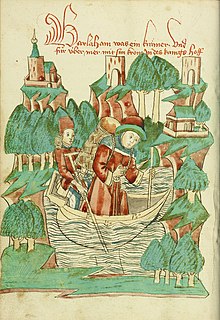 W
WBarlaam of Seminara, c. 1290–1348, or Barlaam of Calabria was a southern Italian scholar and clergyman of the 14th century, as well as a humanist, philologist and theologian.
 W
WFerrer Bassa was a Catalan Gothic painter and miniaturist.
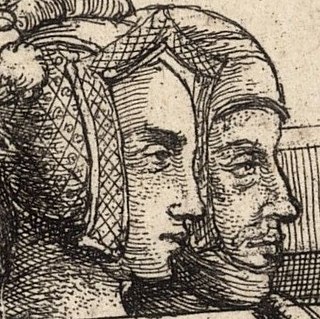 W
WBlanche of Lancaster was a member of the English royal House of Plantagenet and the daughter of the kingdom's wealthiest and most powerful peer, Henry of Grosmont, 1st Duke of Lancaster. She was the first wife of John of Gaunt, the mother of King Henry IV, and the grandmother of King Henry V of England.
 W
WBonne of Luxemburg or Jutta of Luxemburg, was born Jutta (Judith), the second daughter of John the Blind, king of Bohemia, and his first wife, Elisabeth of Bohemia. She was the first wife of King John II of France; however, as she died a year prior to his accession, she was never a French queen. Jutta was referred to in French historiography as Bonne de Luxembourg. She was a member of the House of Luxembourg. Among her children were Charles V of France, Philip II, Duke of Burgundy, and Joan, Queen of Navarre.
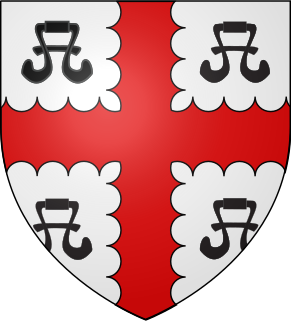 W
WRobert Bourchier, 1st Baron Bourchier was Lord Chancellor of England, the first layman to hold the post.
 W
WThomas Bradwardine was an English cleric, scholar, mathematician, physicist, courtier and, very briefly, Archbishop of Canterbury. As a celebrated scholastic philosopher and doctor of theology, he is often called Doctor Profundus.
 W
WCatherine of Austria was the daughter of the Habsburg Duke Leopold I of Austria and the wife successively of the French nobleman Enguerrand VI, Lord of Coucy and the German Konrad von Hardeck, Burgrave of Magdeburg.
 W
WPierre Desprès (1288–1361) was a French Cardinal during the period of the Avignon Papacy.
 W
WStefan Uroš IV Dušan, known as Dušan the Mighty, was the King of Serbia from 8 September 1331 and Tsar and autocrat of the Serbs and Greeks from 16 April 1346 until his death in 1355.
 W
WEnguerrand VII de Coucy,, also known as Ingelram de Coucy and Ingelram de Couci, was a medieval French nobleman, and the last Lord of Coucy. He became son-in-law of King Edward III of England following his marriage to the king's daughter, Isabella of England, and the couple was subsequently granted by the king several English estates, among them the title Earl of Bedford. Coucy fought in the Battle of Nicopolis (1396) as part of a failed crusade against the Ottoman Empire, and was taken prisoner. Having contracted the bubonic plague, he died in captivity at Bursa, Ottoman Empire.
 W
WEric I, Duke of Mecklenburg was a Duke of Mecklenburg and heir to the throne of Sweden.
 W
WEric XII was King of Sweden and lord of Scania in 1344–1359. He was a co-ruler with his father, King Magnus IV, from 1356 until his death in 1359.
 W
WGentile Gentili da Foligno was an Italian professor and doctor of medicine, trained at Padua and the University of Bologna, and teaching probably first at Bologna, then at the University of Perugia, Siena (1322-24), where his annual stipend was 60 gold florins; he was called to Padua (1325-35) by Ubertino I da Carrara, Lord of Padua, then returned to Perugia for the remainder of his career. He was among the first European physicians to perform a dissection on a human being (1341), a practice long that had been taboo in Roman times. Gentile wrote several widely copied and read texts and commentaries, notably his massive commentary covering all five books of the Canon of Medicine by the 11th-century Persian polymath Avicenna, the comprehensive encyclopedia that, in Latin translation, was fundamental to medieval medicine. Long after his death, Gentile da Foligno was remembered in the Nuremberg Chronicle (1493) as Subtilissimus rimator verborum Avicenne, "that most subtle investigator of Avicenna's teachings"
 W
WFrederick I was the Duke of Athens and Neopatria from 1348 to his death, also the Count of Malta. He succeeded his father John, Duke of Randazzo, in Greece after his father died of the Black Plague, but he too died of the same plague seven years later.
 W
WGerard Groote, otherwise Gerrit or Gerhard Groet, in Latin Gerardus Magnus, was a Dutch Roman Catholic deacon, who was a popular preacher and the founder of the Brethren of the Common Life. He was a key figure in the Devotio Moderna movement.
 W
WJeanne of Hainault was ruling Countess of Soissons from 1344 until 1350.
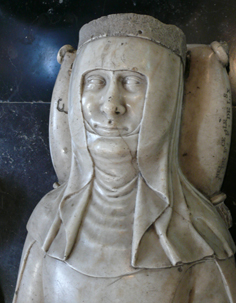 W
WJoan II, also known as Joan of France, was Queen of Navarre from 1328 until her death. She was the only surviving child of Louis X of France, the King of France and Navarre, and Margaret of Burgundy. Joan's paternity was dubious because her mother was involved in a scandal, but Louis X declared her his legitimate daughter before he died in 1316. However, the French lords were opposed to the idea of a female monarch and elected Louis X's brother, Philip V, king. The Navarrese noblemen also paid homage to Philip. Joan's maternal grandmother, Agnes of France, Duchess of Burgundy, and uncle, Odo IV of Burgundy, made attempts to secure the counties of Champagne and Brie to Joan, but the French royal troops defeated her supporters. After Philip V married his daughter to Odo and granted him two counties as her dowry, Odo renounced Joan's claim to Champagne and Brie in exchange for a compensation in March 1318. Joan married Philip of Évreux, who was also a member of the French royal family.
 W
WJoan of England was a daughter of Edward III and his wife, Philippa of Hainault. Joan, also known as Joanna, was born in the Tower of London. As a child she was placed in the care of Marie de St Pol, wife of Aymer de Valence and foundress of Pembroke College, Cambridge. She grew up with her sister Isabella, her brother Edward, and their cousin Joan of Kent, and she died in the Black Death that struck Europe in 1348.
 W
WJoan of Lancaster sometimes called Joan Plantagenet after her dynasty's name, was the third daughter of Henry, 3rd Earl of Lancaster and Maud Chaworth.
 W
WJoan of Burgundy, also known as Joan the Lame, was Queen of France as the first wife of King Philip VI. Joan ruled as regent while her husband fought on military campaigns during the Hundred Years' War: 1340, 1345-1346 and 1347.
 W
WJohn, Duke of Randazzo (1317–1348) was duke of Randazzo, Athens, and Neopatria, Count of Malta and regent of Sicily (1342–1348).
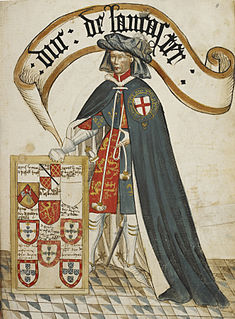 W
WHenry of Grosmont, 1st Duke of Lancaster was an English statesman, diplomat, soldier, and Christian writer. The owner of Bolingbroke Castle in Lincolnshire, Grosmont was a member of the House of Plantagenet, which was ruling over England at that time. He was the wealthiest and most powerful peer of the realm.
 W
WAmbrogio Lorenzetti or Ambruogio Laurati was an Italian painter of the Sienese school. He was active from approximately 1317 to 1348. He painted The Allegory of Good and Bad Government in the Sala dei Nove in Siena's Palazzo Pubblico. His elder brother was the painter Pietro Lorenzetti.
 W
WPietro Lorenzetti or Pietro Laurati was an Italian painter, active between c.1306 and 1345. Together with his younger brother Ambrogio, he introduced naturalism into Sienese art. In their artistry and experiments with three-dimensional and spatial arrangements, the brothers foreshadowed the art of the Renaissance.
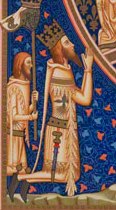 W
WLouis I, also known as Louis of Taranto, was a member of the Capetian House of Anjou who reigned as King of Naples, Count of Provence and Forcalquier, and Prince of Taranto.
 W
WLouis II, son of Louis I of Vaud of the House of Savoy, was the Baron of Vaud from 1302 until his death. A military man, he fought widely in Italy and, during the first phase of the Hundred Years' War, in France. As a diplomat he visited England and the papal court in Rome and Avignon, and he served as regent of the County of Savoy between 1343 and his death, during which period he was the leader of the House of Savoy.
 W
WMarcus of Viterbo (1304–1369) was an Italian Franciscan. He became Minister General of his order in 1359, a papal legate, and in 1366 a Cardinal.
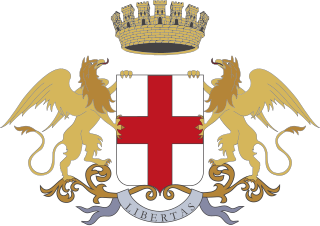 W
WLeonardo Montaldo or di Montaldo was a statesman who became the 7th doge of the Republic of Genoa.
 W
WMichele Morosini was the Doge of Venice for a few months, from 10 June 1382 to his death in October the same year.
 W
WGiovanni di Murta was elected the second doge of the Republic of Genoa after the resignation of Simone Boccanegra, on 25 December 1345. His dogate was dominated by his attempts to break the circle of political violence which had crippled the city over the past century and to reassert the Genoese domination over the Mediterranean colonies.
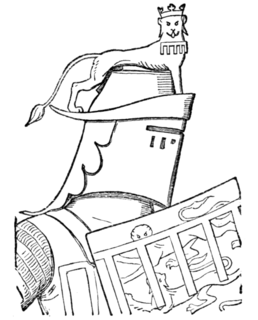 W
WThomas de Mowbray, 1st Duke of Norfolk, 1st Earl of Nottingham, 3rd Earl of Norfolk, 6th Baron Mowbray, 7th Baron Segrave, KG, Earl Marshal was an English peer. As a result of his involvement in the power struggles which led up to the fall of Richard II, he was banished and died in exile in Venice.
 W
WOdo IV or Eudes IV was Duke of Burgundy from 1315 until his death and Count of Burgundy and Artois between 1330 and 1347, as well as titular King of Thessalonica from 1316 to 1320. He was the second son of Duke Robert II and Agnes of France.
 W
WPhilip of Rouvres was the Count of Burgundy and Count of Artois from 1347, Duke of Burgundy from 1349, and Count of Auvergne and Boulogne from 1360. He was the only son of Philip, heir to the Duchy of Burgundy, and Joan I, heiress of Auvergne and Boulogne.
 W
WEleanor of Portugal, was a Portuguese infanta and queen consort of Aragon from 1347 to 1348.
 W
WSir John de Pulteney or Sir John Poultney was a major English entrepreneur and property owner, who served four times as Mayor of London.
 W
WRichard Rolle was an English hermit, mystic, and religious writer. He is also known as Richard Rolle of Hampole or de Hampole, since at the end of his life he lived near a Cistercian nunnery in Hampole, now in South Yorkshire. In the words of Nicholas Watson, scholarly research has shown that "[d]uring the fifteenth century he was one of the most widely read of English writers, whose works survive in nearly four hundred English ... and at least seventy Continental manuscripts, almost all written between 1390 and 1500."
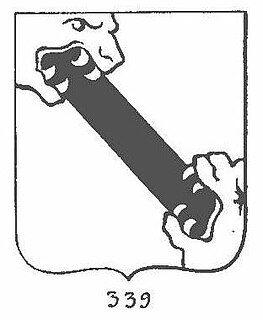 W
WFernando (or Fernán) Sánchez de Tovar, 1st Lord of Belves was a significant Castilian soldier and Admiral of the Middle Ages.
 W
WSimeon Ivanovich Gordiy was Prince of Moscow and Grand Prince of Vladimir. Simeon continued his father's policies aimed to increase the power and prestige of his state. Simeon's rule was marked by regular military and political standoffs against the Novgorod Republic and the Grand Duchy of Lithuania. His relationships with neighboring Russian principalities remained peaceful if not passive: Simeon stayed aside from conflicts between subordinate princes. He had recourse to war only when war was unavoidable. A relatively quiet period for Moscow was ended by the Black Death that claimed the lives of Simeon and his sons in 1353.
 W
WMladen III Šubić was a member of the Croatian Šubić noble family, who ruled from Klis Fortress. He was in possession of Klis, Omiš and Skradin. He is also known as Shield of the Croats, according to the Latin epitaph in verse on his grave in Trogir.
 W
WGilbert Talbot, 3rd Baron Talbot was an English nobleman and soldier. He was the grandfather of John Talbot, 1st Earl of Shrewsbury.
 W
WBernardo Tolomei was an Italian Roman Catholic theologian and the founder of the Congregation of the Blessed Virgin of Monte Oliveto. In the Roman Martyrology he is commemorated on August 20, but in the Benedictine calendar his optional memorial is celebrated on the previous day.
 W
WJohn de Ufford was chancellor and head of the royal administration to Edward III as well as being appointed to the Archbishopric of Canterbury.
 W
WGiovanni Villani was an Italian banker, official, diplomat and chronicler from Florence who wrote the Nuova Cronica on the history of Florence. He was a leading statesman of Florence but later gained an unsavoury reputation and served time in prison as a result of the bankruptcy of a trading and banking company he worked for. His interest in and elaboration of economic details, statistical information, and political and psychological insight mark him as a more modern chronicler of late medieval Europe. His Cronica is viewed as the first introduction of statistics as a positive element in history. However, historian Kenneth R. Bartlett notes that, in contrast to his Renaissance-era successors, "his reliance on such elements as divine providence links Villani closely with the medieval vernacular chronicle tradition." In recurring themes made implicit through significant events described in his Cronica, Villani also emphasized three assumptions about the relationship of sin and morality to historical events, these being that excess brings disaster, that forces of right and wrong are in constant struggle, and that events are directly influenced by the will of God.
 W
WVojislav Vojinović was a 14th-century Serbian nobleman, and one of the leading members of Serbian noble House of Vojinović. He held prominent offices during the reigns of Serbian Emperors Stefan Dušan and Stefan Uroš. His father Vojin was governor of the region of Hum, while Vojislav held several positions, from 1349 to 1363. After 1355, he became the most influential noble in northwestern parts of the Serbian Empire, controlling frontier regions between the Adriatic coast and river Drina, including Konavli, Trebinje, Popovo Polje, Gacko and Užice.
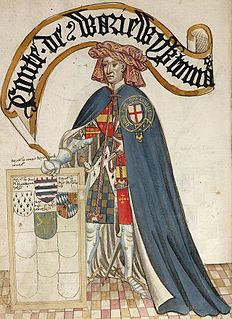 W
WThomas de Beauchamp, 11th Earl of Warwick, KG, sometimes styled as Lord Warwick, was an English nobleman and military commander during the Hundred Years' War. His reputation as a military leader was so formidable that he was nicknamed 'the devil Warwick' by the French. In 1348 he became one of the founders and the third Knight of the Order of the Garter.